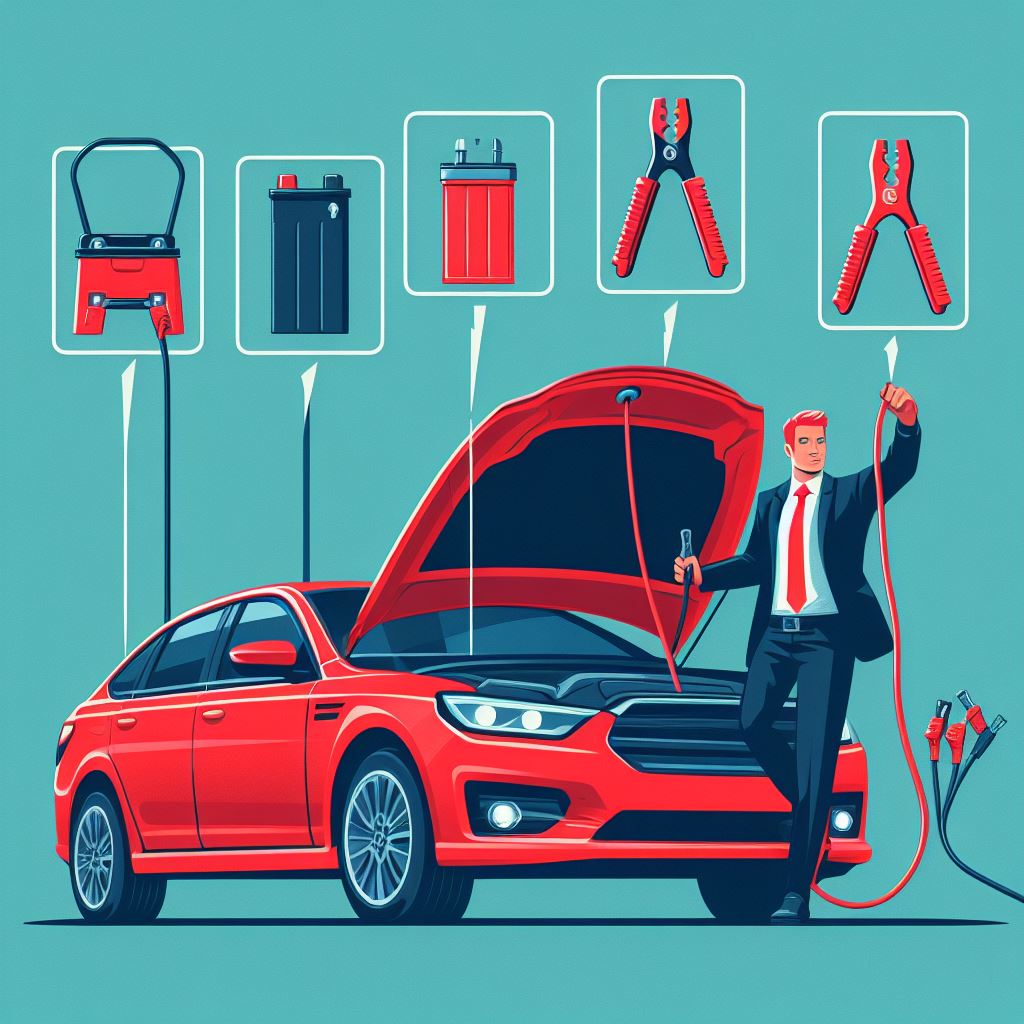Are you a beginner who wants to learn how to jump start a car? Don’t worry, we’ve got you covered!
In this 6-step guide, we’ll walk you through the process of jump starting a car. It’s a simple and essential skill that can save you from the frustration of a dead battery.
From understanding the equipment needed to following the correct cable connection order, we’ll provide you with all the necessary information and tips for a successful jump start.
So, let’s get started on this exciting journey of learning how to jump start a car!

Key Takeaways
- Jump starting a car is a simple process that can be done by following a few steps, but if unsure or uncomfortable, it is advisable to seek the help of a mechanic.
- The necessary equipment for jump starting a car includes jumper cables, a car with a fully charged battery, and ensuring the cables are in good condition.
- The steps to jump start a car include turning off the ignition of both cars, connecting the cables in the correct order, starting the engine of the charged car, and checking if the dead car starts.
- Jump starting an automatic car follows the same process as a manual car, but it is important to ensure the automatic car is in ‘Park’ mode and engage the parking brake.
Understanding the Jump Start Process
To understand the jump start process, make sure you have the necessary equipment and follow the correct steps.
First, you’ll need jumper cables to connect the dead battery to a charged battery. Find a car with a fully charged battery to provide the power for jump starting.
Park the car that needs to be started in a convenient position for cable connection. Before connecting the cables, make sure they’re in good condition and free from rust or exposed wires.
It’s crucial to follow the correct order of cable connection to avoid damaging the batteries. Once everything is set, turn off the ignition of both cars and connect the red jumper cable to the positive terminal of the dead battery, then to the positive terminal of the charged battery.
Connect the black jumper cable to the negative terminal of the charged battery and the other end to an unpainted metal surface of the car with the dead battery.
Start the engine of the car with the charged battery and let it idle for a minute.
Essential Equipment and Preparation
Make sure you have the necessary jumper cables and a car with a fully charged battery, so you can properly prepare for jump starting a car. Before attempting a jump start, it’s important to understand the process and have the right equipment.
Jumper cables are required to connect the dead battery to the charged battery. Park the car in a convenient position for cable connection. Check that the jumper cables are in good condition, without any rust or exposed wires.
Remember to follow the correct order of cable connection to avoid damage to the batteries. Once you have everything ready, turn off the ignition of both cars and follow the steps to jump start the car with the dead battery.
Step-by-Step Guide to Jump Starting a Car
You can easily jump start your car by following this step-by-step guide.
First, turn off the ignition of both cars.
Then, connect the red jumper cable to the positive terminal of the dead battery and the other end to the positive terminal of the charged battery.
Next, connect the black jumper cable to the negative terminal of the charged battery and the other end to an unpainted metal surface of the car with the dead battery.
Start the engine of the car with the charged battery and let it idle for a minute or two.
Finally, crank the engine of the car with the dead battery and check if it starts. If not, double-check the cable connections and try again.
Remember to be cautious and follow the correct cable connection order to avoid any damage.
Jump Starting an Automatic Car
Connect the jumper cables in the correct order, ensuring the automatic car is in ‘Park’ mode and the parking brake is engaged, before jump-starting the car with the dead battery.
First, turn off the ignition of both cars.
Next, grab the red jumper cable and connect one end to the positive terminal of the dead battery. Then, attach the other end of the red cable to the positive terminal of the charged battery.
Now, take the black jumper cable and connect it to the negative terminal of the charged battery. Finally, connect the other end of the black cable to an unpainted metal surface of the car with the dead battery.
Start the engine of the car with the charged battery and let it idle for a minute.
Now, crank the engine of the car with the dead battery and see if it starts. If not, double-check the cable connections and try again.
Tips and Safety Precautions for Successful Jump Starts
How can you ensure a successful jump start and prioritize safety at the same time?
When it comes to jump starting a car, safety should always be your top priority. To ensure a successful jump start, there are a few key steps you should follow.
First, make sure both cars are turned off before beginning the process.
Next, connect the red jumper cable to the positive terminal of the dead battery, then connect the other end to the positive terminal of the charged battery.
Connect the black jumper cable to the negative terminal of the charged battery, and the other end to an unpainted metal surface of the car with the dead battery.
Start the engine of the car with the charged battery and let it idle for a minute or two.
Finally, crank the engine of the car with the dead battery and check if it starts.
Remember to double-check all cable connections and never let the jumper cables touch each other.
Conclusion
So there you have it, a beginner’s guide to jump starting a car!
Remember, it’s always important to have the necessary equipment and follow the correct steps for a successful jump start.
Did you know that according to the American Automobile Association (AAA), dead batteries are one of the top reasons for roadside assistance calls?
By learning how to jump start a car, you’ll be prepared to handle this common issue and get back on the road in no time.
